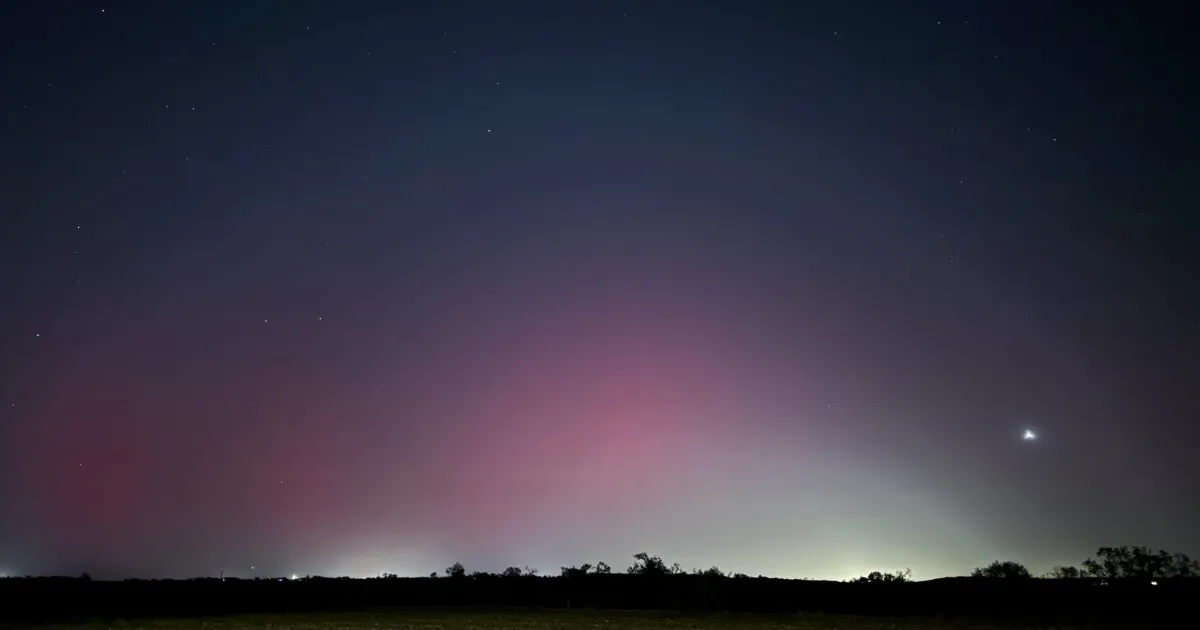
The stunning aurora borealis will once again be visible in the Austin area tonight, as confirmed by the National Weather Service. This natural phenomenon, known for its spectacular light displays, is an event that many residents in Texas rarely experience. Meteorologist Harrison Tran from the National Weather Service shared insights on what to expect.
According to Tran, “Aurora forecasting is a little tricky.” Despite the challenges, he noted an increase in activity within the Earth’s atmosphere, indicating that viewers are “at least on track to see some additional aurora tonight, and it could be as intense as yesterday.” This exciting forecast is attributed to a recent series of coronal mass ejections, which are sudden bursts of solar material released from the sun's surface into space.
These coronal mass ejections are not always directed towards Earth. However, when they are, the Earth’s magnetic field directs the high-energy particles towards the atmosphere, particularly near the North and South Poles. Tran explained, “In most cases, the aurora is generally only visible if you’re closer to the polar regions. But recently we’ve experienced some strong emissions of solar material aimed toward Earth, resulting in these stunning displays of aurora visible as far south as Texas.”
Seeing the aurora borealis in Texas is a rare occurrence. Tran attributes this rarity to a combination of favorable weather conditions, well-timed solar events, and a bit of luck. He emphasizes, “We’re close to actually the peak of the current solar cycle,” which is when the sun is most active in producing solar flares and coronal mass ejections. The timing of the latest solar burst aimed at Earth adds to the excitement.
While the view in Central Texas won’t quite match the breathtaking displays seen in places like Scandinavia, viewers can still enjoy a unique experience. Texans will primarily see the upper half of the aurora, where solar particles interact with a thin layer of oxygen in the upper atmosphere, resulting in a beautiful red hue. In contrast, those closer to the North Pole can witness interactions at lower altitudes, producing green and purple hues.
For the best chance to see the aurora, Tran advises that the optimal viewing conditions will be after sunset but before midnight. The weather service is predicting low cloud coverage and fog during this time. The northern sky will showcase the lights, but viewers in urban areas may find that buildings and light pollution could obstruct their view. However, Tran assures that it is possible to catch a glimpse even from suburban areas.
“I live in suburban South Austin, where there are plenty of city lights visible, but even then you can see the aurora with just your naked eye,” Tran remarked. He encourages everyone to take the opportunity to witness this rare event, stating, “It’s not something you see every day.” With the right conditions tonight, don’t miss your chance to experience the breathtaking aurora borealis in Austin!